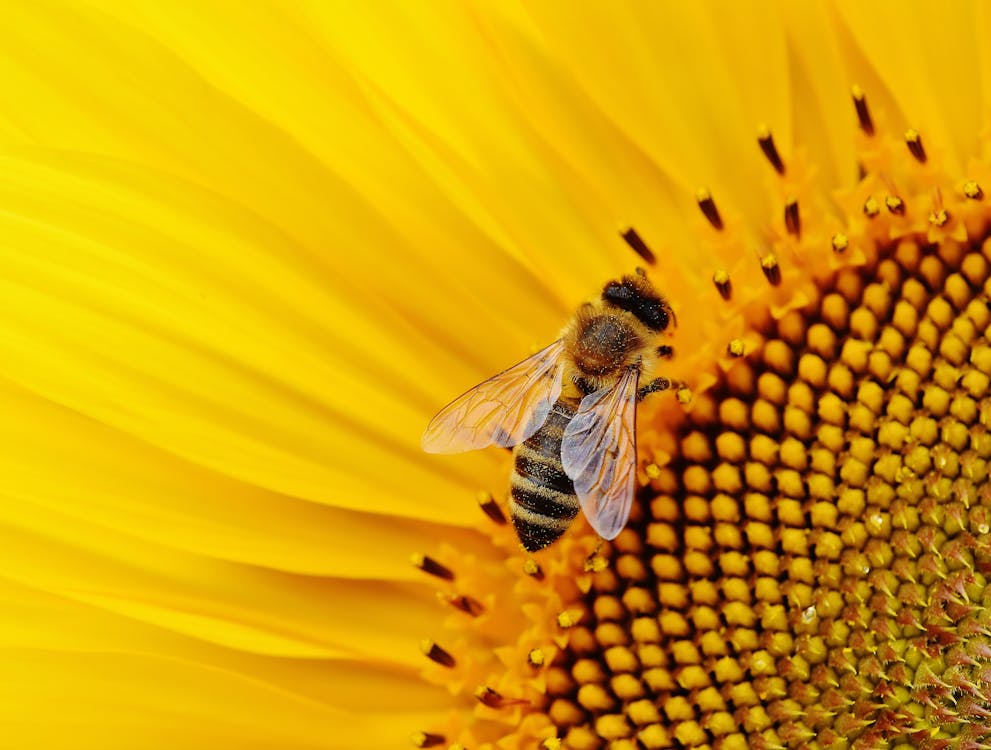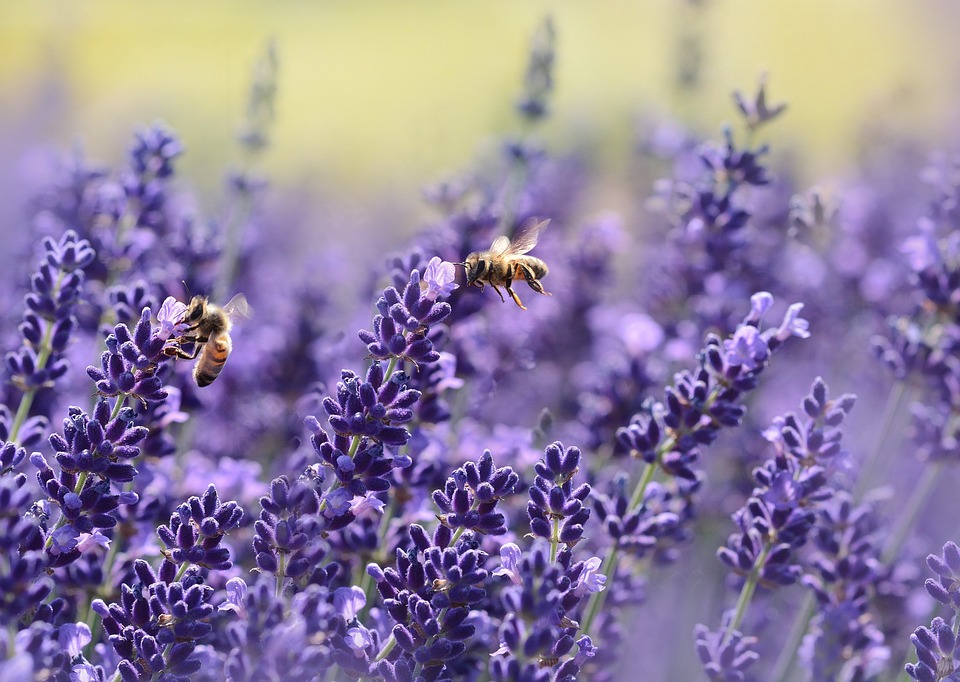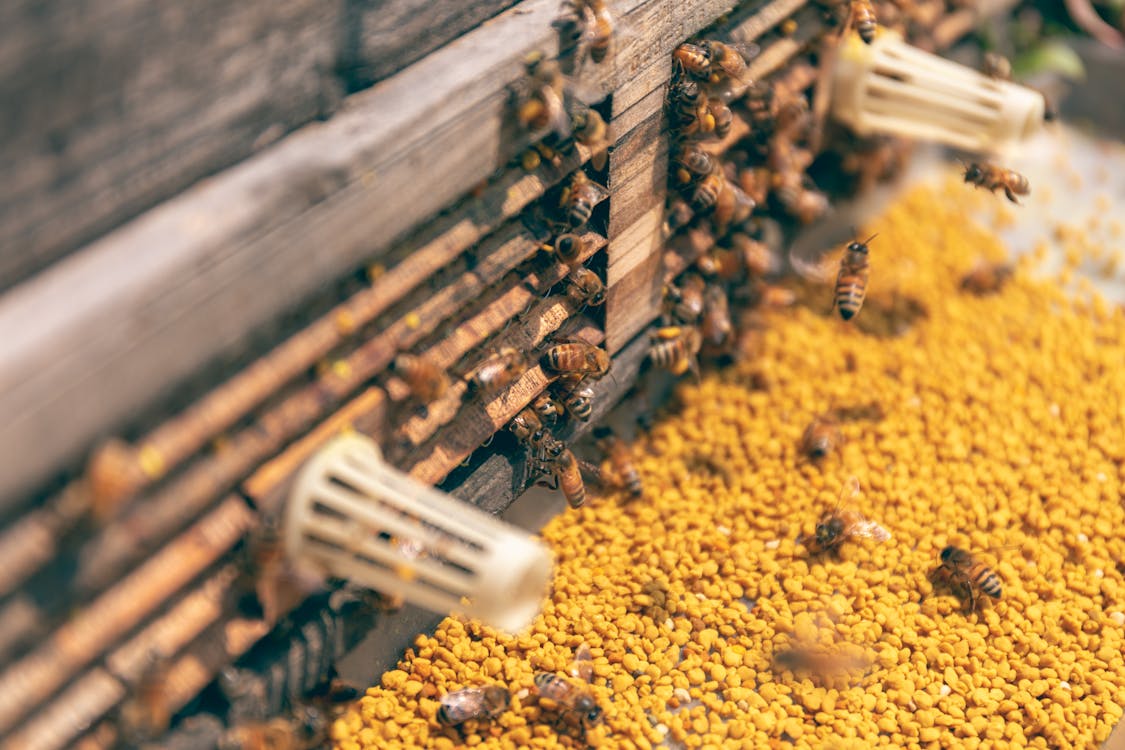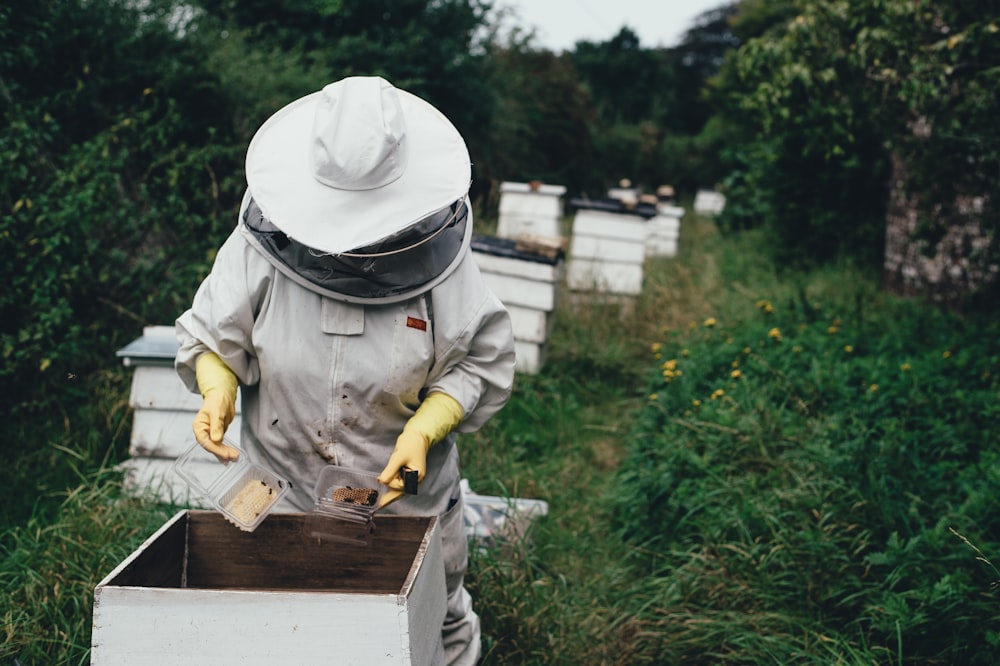Lately, bees and bee pollination have bee-n in the spotlight. The world has come to recognise the importance of these small but essential creatures.
Want to learn a thing or two about bees or are you interested in keeping your own? Take a look at the following information.
The incredible purpose of bees
Bee-lieve it or not, bee pollination is vital for a healthy environment. The humble little bee has a very big job to do when it comes to the balance of nature.
Bumbling and buzzing around, bees are integral in cross-pollination. They help plants to reproduce and keep populations from inbreeding. Bees also serve as a food source for any number of other animals. Reptiles, amphibians, spiders and even large mammals enjoy bees as part of their diet. Of course, we all know bears enjoy honey. Badgers, weasels, foxes, mice, and hedgehogs also love to dine out on the sweet delicacy as much as we do.
Along with keeping nature healthy, bee pollination is a vital part of agriculture. Bees help pollinate many human cultivated crops just as they do in the wild. Leading scientists predict that without bees the global ecosystem, as well as agriculture, could fall apart to the degree that life would no longer be sustainable for humans! So the busy little bee actually has the giant purpose of keeping us all alive and well!

Bee pollination: How bees make honey
The process of making honey is a highly structured and complex one. Outlined here is a basic rundown of the work that goes on in and out of the hive:
- Industrious worker bees buzz diligently, sometimes for miles. They find and collect the necessary pollen from flowers.
- Once they have collected as much pollen as they can carry, they bumble back to the hive to deliver their payload.
- They chew up the pollen and place the still wet concoction into the wax like cells of the honeycomb.
- While their older siblings head back out for more pollen, newly hatched worker bees will vigorously fan the honey with their wings (this is why a beehive will buzz so loudly!). The fanning dehydrates the honey and, when a few further enzymes are added, transform it into the thicker consistency we are familiar with.
- When the honey has reached the required consistency, the young workers cap and seal the cells to keep it fresh and to keep out unwanted dirt and debris.
This is a highly simplified rundown of the sublime chemical know-how of the bee. Bee pollination is a truly fascinating subject and well worth deeper exploration. You can find out more by attending a local beekeeping workshop or joining your local amateur beekeeping association.
The main types of bees in Australia
It may surprise you to discover there are more than 1,500 species of bees in Australia!
Of these, there are three invasive (non-native) species, one of which is the European Honey Bee. The humble little honey bee is a great provider of honey. This orange and black striped worker is the one with whom we are most familiar. Introduced in the early 1800s, European Honey Bees have taken well to Australia. They are now a vital part of the agricultural industry that relies on European Honey Bee pollination for the health of its crops.
At this stage, experts are not certain of the impact of this introduced bee on native populations. However, efforts are made to keep their colonies out of wilderness areas.
In Tasmania, locals and visitors can see the big and furry Bumble Bee buzzing around almost any type of blossoming flower. Unfortunately, as adorable as they are, these Bumble Bees are also introduced and may pose a threat to native bees on the island state. On the mainland, Asian Honey Bees also compete with our native bees for pollen and maybe an issue in the future.
Of Australian species, 1,500 plus is far too many to list! Here is a brief list of some of the most significant:
- Stingless Social Bees: These harmless little bees make excellent native honey. The like to nest in hollow trees. Unlike the more familiar honeycomb used by other bees, these natives store their aromatic honey in tiny pots fashioned from beeswax and plant resin.
- Leafcutter Bees: If you notice small circles cut away from the edges of leaves in your garden, there could be leafcutter bees nearby! They use the leaves to make pods for their young.
- Masked Bee: This skinny little bee has very little hair and a distinctive yellow spot on its back. It also has a pale marking on its head, giving it its name.
- Blue Banded Bees: As colourful as they sound, Blue Banded Bees have distinctive, iridescent blue-free bands on the backs. Along with the bands, they also sport bright golden hairs on their heads and rears.
- Teddy Bear Bees: These red and furry bees live up to the cuteness of their namesake. They live in burrows underground rather than hives.
- Reed Bees: Reed bees love to live in the dried up stems of some native plants such as lantana. If you are removing dried stems, check to make sure you aren’t harming a friendly bee colony!
- Black and Yellow Carpenter Bees: These solitary bees are Australia’s biggest native bees. They can grow up to 24mm long, pretty big for a bee! After buzzing around loudly, they head home to their home tunnel dug into decaying wood, hence their name. You’ll find them in parts of WA, the Northern Territory, Queensland and NSW.

More than honey: Amazing facts about bees
Bees are easy to take for granted but they are truly fascinating creatures. Here are some facts and statistics you may not have known about bees:
- Bees Are Dangerous: Bees hospitalise thousands of people every year. Statistics in the US show that 60 people a year die from bee, wasp and hornet stings. That’s considerably more than the less than one person a year killed by sharks in the US. But there’s no need to get mad at bees or talk about culling them. Most casualties of bees suffer from anaphylaxis. A dangerous allergic reaction like this can be avoided by carrying an EpiPen.
- The World’s Biggest Bee: The story of the world’s largest species of bee is actually a happy one! Native to SouthEast Asia, Wallace’s giant bee measures in at a whopping 6cm long! If that doesn’t seem like much, remember, this is a flying insect almost as long as an average little finger and just as thick. Scientists believed this bee to be extinct, with the last known sighting in 1981. Until March of this 2019 that is, when a population was found happily buzzing around in Indonesia!
- Nepalese Honey Hunters: If you think your job is hard, spare a thought for the human honey hunters of Nepal. Imagine climbing 300 ft up a dangling bamboo ladder to harvest honey from hives clinging to the face of a cliff! The local bee population are the world’s largest honey – producing bees but they are fiercely protective of their golden liquid. This traditional job has sadly disappeared, with the last honey hunter retiring in 2017 at the age of 57. Younger generations either have no interest in the death-defying job or have yet to have the traditional dream that indicates they should pursue the career. You can read more about the Nepalese Honey Hunters, their cultural beliefs (including Rangkemi, the guardian spirit of bees) and the way they use the honey they gather in the National Geographic.
What is ‘Beepocalypse’?
You may have heard in recent times about the ‘beepocalypse’ or seen bumper stickers and news articles shouting ‘save the bees!’.
Considering what you now know about the importance of bee pollination, hearing that bees are under threat can be quite distressing.
There is good news and bad news when it comes to this story. The good news is that although honey bee populations, specifically European Honey bees, have taken a hit over the past few years, they are not currently endangered. Populations are beginning to increase again and, as an agricultural mainstay, the European honey bee is very well protected.
The bad news is the same can’t bee said for several species of native bees in Australia and around the world. In many countries, including Australia and the US, native bees are now competing heavily with introduced species. The largest issue is that the introduced bees tend to be indiscriminate with their choice of pollen. This means that they compete with every kind of native bee, many of which are specialists when it comes to flower choice. This competition can be tough on natives and may be affecting their numbers.

What you can do to help save the bees
Happily, there are ways we can all help native bees in our own backyards. Here are some ideas to get you started:
- Get to know your local bees: Not all types of native bee live in all parts of Australia so have a quick look into which ones might live near you.
- Avoid Pesticides: It is especially important not to use these chemicals around the time that flowers are blossoming.
- Leave Some Undisturbed Ground: Many native bees are burrowers. A patch of ground left alone is a great place for them to make their home.
- Keep Plants That are Attractive to Bees: This includes natives and exotics. It’s also a great idea to provide flowers any time your garden might not be blooming.
- Provide Water: This need not be a large or deep area. In fact, bees often drown in larger bodies of water. A small patch of damp sand or a birdbath full of pebbles both work perfectly for your buzzing friends.
How to get started keeping bees at home
If you want to entice native bees then, along with the tips above, you can buy or make a bee hotel. Bee hotels are simple, artificial nesting sites for bees that are easy to buy or a great DIY job. If you hope to keep honey bees for their honey, this is a little more complicated but still easy enough for anyone to do!
First of all, there is no problem with having a hive of European honey bees in your yard. They will not be a serious threat to either the environment (European bees are most threatening to native species when they nest in the wild) or people. It may be wise to check with your neighbours first though, just in case someone nearby has a serious allergy. Check local council guidelines as well.
After you’ve established whether or not you can keep bees in your yard, the first thing to do is research. Read up as much as you can on bees and beekeeping. You’ll need a hive so you’ll have to learn where to buy one or how to build one. You’ll need to source your local bee supplier. They’ll help you decide what bees you need and what time of year you should aim to install them in their new hive. Bees generally swarm in the Spring so that is usually the best time. Invest in some protective gear, and remember, bees sting! Keep young children well away when introducing your bees to their new home.
Once you have the gear and have done your research you will be enjoying fresh honey before you know it! As previously mentioned, you can join a local club or take a class. This will help you learn exactly where to put your hive and how to help keep it healthy.
Honey treats at the Westport Club
Now that you’ve got the honey on the mind, why not head to the Westport club for some amazing honey treats?
Whether it’s a simple honey on fresh toast for breakfast or the perfect honey mustard mayo on the warm veggie salad at Hasting Coffee Co. or a ‘Jack-of-all Trades’ at Jimmy’s Bar and Grill, honey is always on the menu at the Westport Club!


